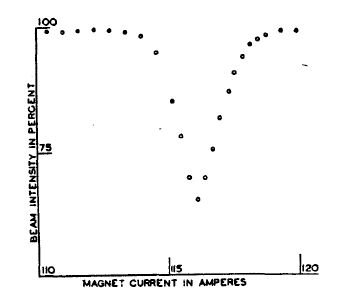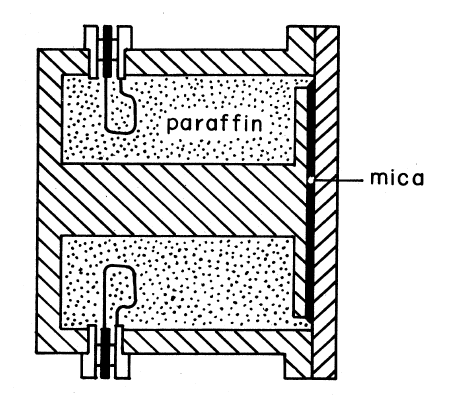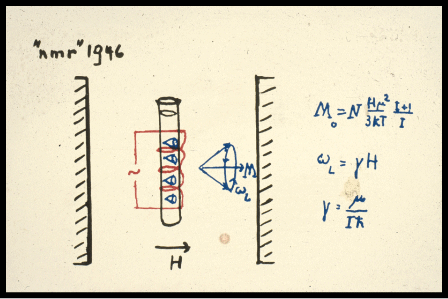Discovery of NMR (original) (raw)
| Who discovered NMR? |  |
|---|
Isidor Rabi
Isidor Rabi (1898-1988)
Credit for the discovery of NMR goes to Isidor Isaac Rabi, who received the Nobel Prize in Physics in 1944. Working at New York City’s Columbia University in the 1930’s, Rabi and his team were attempting to measure the magnetic properties of various nuclei including hydrogen, deuterium, and lithium. Using a modification of Otto Stern's apparatus, Rabi described how nuclei could be induced to flip their principal magnetic orientation by an oscillating magnetic field. This idea was originally proposed by Dutch physicist Cornelius J. Gorter in 1936 (one year before Rabi's successful demonstration), but Gorter was unable to validate this phenomenon due to limitations of his experimental setup. Gorter is sometimes known as "the man who almost discovered NMR."
In honor of Dr. Rabi's achievements, The International Society for Magnetic Resonance in Medicine (ISMRM) presents the I.I. Rabi Award each year to a young investigator for contributions to the basic science aspects of NMR.
Felix Bloch and Edward Purcell
Felix Bloch (1905-1983) & Edward Purcell (1912-1997)
Although Isidor Rabi is generally credited for the discovery of NMR, he did so in an inherently "unnatural" context — using a molecular beam in a vacuum where where individual nuclei were isolated from each another and their environment. It would not be until late 1945 that independent teams led by Felix Bloch at Stanford and Edward Mills Purcell at the Massachusetts Institute of Technology, would simultaneously demonstrate NMR in condensed matter (water and paraffin, respectively). Reports of their discoveries were simultaneously published as short "Letters to the Editor" in the January, 1946 issue of Physical Review. In recognition for this and their subsequent work, Bloch and Purcell jointly received the the Nobel Prize for Physics in 1952.
About 1 month later at Stanford, Felix Bloch, William Hansen, and Martin Packard demonstrated NMR in a different substance and using a much smaller apparatus. They placed about 1 cc of water in a small glass bulb, around which were wrapped separate transmitter and receiver coils optimized for radiofrequencies in the range of 8 MHz. The receiver coils were placed perpendicular to the transmitter coils so that the input waves would not be detected. The RF-specimen device was then placed between the poles of an adjustable electromagnet operating at approximately 0.18T. Like Purcell's group, Bloch's team slowly changed the magnetic field until resonance was achieved. Rather than measuring absorption, however, Bloch et al. detected a nuclear induction signal in the receiver coil as a manifestation of the NMR phenomenon.
I have always found it interesting that the two completely different experimental approaches used by Purcell and Bloch mirror the two different ways of describing the NMR phenomenon itself. Purcell's method, measuring energy absorption, is inherently quantum mechanical. Bloch's approach, recording a current induced in a nearby coil from rotation of a magnetization vector, is distinctly classical in nature. We continue to feel this dichotomy between the quantum and classical approaches even today.
I strongly encourage everyone involved in the practice of NMR or MRI to take a few minutes to read some of the historical papers cited below. They are all very readable, even for those with little background in the field, and give insight into how such great advances took place.
References
Bloch F, Hansen WW, Packard M. Nuclear Induction. Phys Rev 1946; 69:127 (The original announcement by Bloch's group)
Bloch F, Hansen WW, Packard M. The nuclear induction experiment. Phys Rev 1946;70:474-485. (A detailed account of their apparatus and experiment).
Bloch F. The principle of nuclear induction. Nobel Lecture 1952, pp. 203-215 (from nobelprize.org)
Gorter CJ, Broer LJF. Negative result of an attempt to observe nuclear magnetic resonance in solids. Physica 1942; 9:591. (First published paper to use the term "nuclear magnetic resonance" in its title, attributed to Rabi).
Hahn EL. Felix Bloch and magnetic resonance. Bull Mag Reson 1985; 7: 82-89.
(Good history of Bloch's contributions with many pages from his original notebooks).
Purcell EM, Torrey HC, Pound RV. Resonance absorption by nuclear moments in a solid. Phys Rev 1946; 69:37-38. (The original announcement by Purcell's group)
Purcell EM. Research in nuclear magnetism. Nobel Lecture 1952, pp 219-231 from nobelprize.org
Rabi II. Space quantization in a gyrating magnetic field. Phys Rev 1937; 51:652-4. (the mathematical theory underlying NMR detection in the molecular beam apparatus).
Rabi II, Zacharias JR, Millman S, Kusch P. A new method of measuring nuclear magnetic moment. Phys Rev 1938;53:318. (The first demonstration of resonance absorption in LiCl, whose graph is shown above.)
Ramsey NR. Early history of magnetic resonance. Bull Mag Reson 1985; 7:94-99.
Rigen JS. Quantum states and precession: the two discoveries of NMR. Rev Mod Phys 1986; 58(2):433-448.





